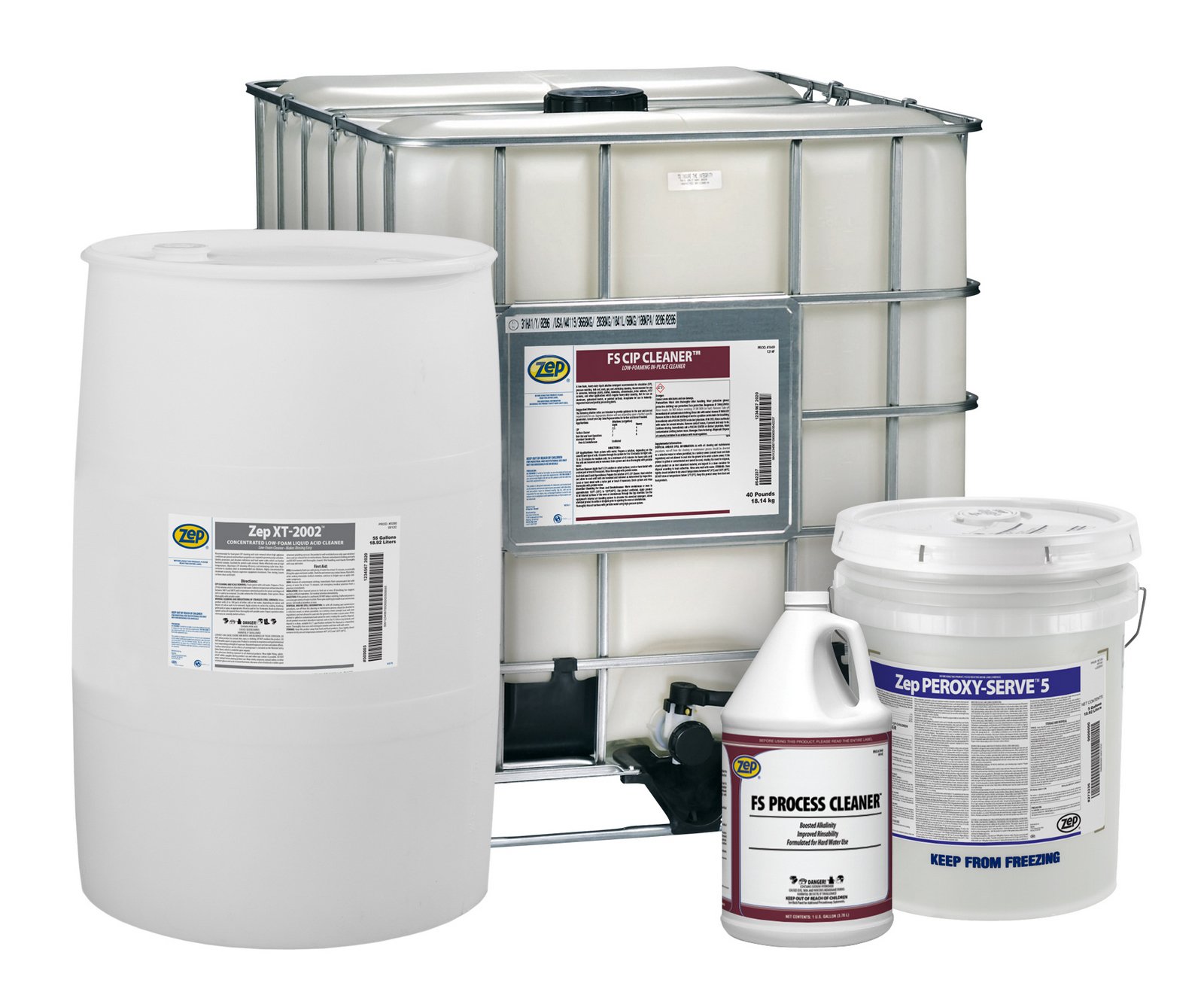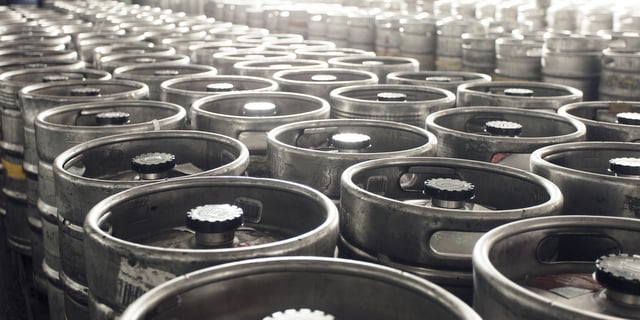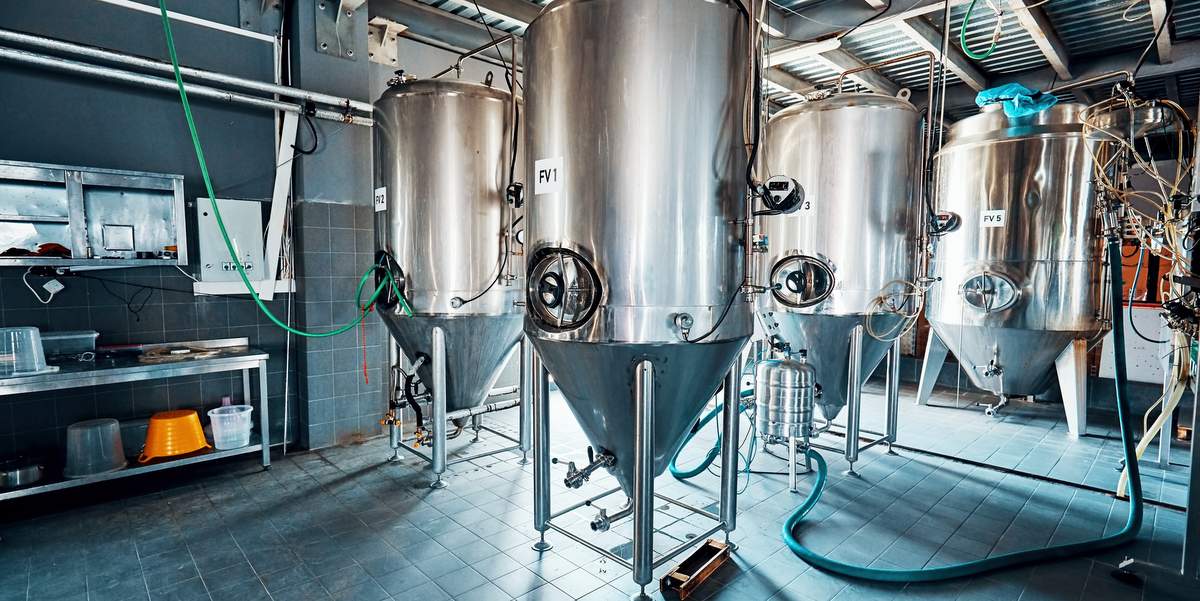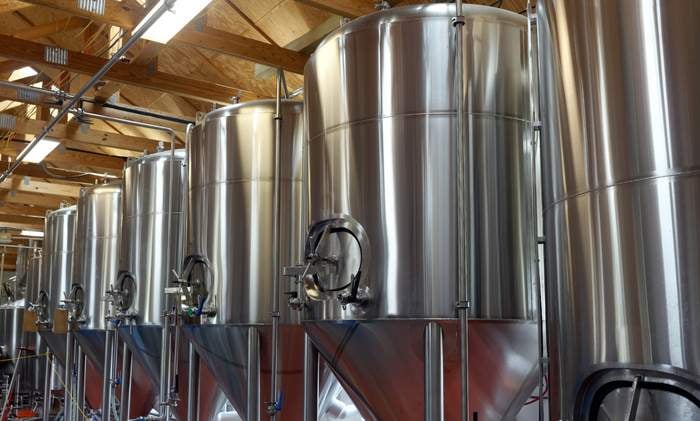
There is a popular saying among brewers: If you love washing dishes, you’ll love brewing beer. That’s because cleaning and sanitation are critical to brewing great beer. Even the slightest contaminant can ruin a perfect batch. So, how do you prevent the spoilage of some stellar suds? Here are answers to commonly asked questions about keg cleaning and sanitation.
How do I remove beerstone inside my kegs?
Beerstone is a calcium deposit that can appear as a light brownish film or scale inside a keg and the spear. If not removed, it will leave an unsanitary surface that can harbor microorganisms and biofilms. Also, the beer can have an off taste. If the caustic solution alone was not efficient in removing beerstone, rinse the keg out with water and perform an acid wash with a 1 or 2 percent phosphoric/nitric acid blend. Rinse and inspect the internal surfaces of the keg before proceeding to the sanitizing step.
How can I ensure that my keg is clean and free of beerstone?
After cleaning the keg with an alkaline or caustic cleaner, inspect the inside surfaces of the keg through the spear hole with a bright flashlight. Be sure to pay close attention to the keg’s spear as it can attract beerstone scales. To prevent the accumulation of beerstone inside the keg, use an acid wash weekly on kegs.
How do I clean my keg fittings?
Immerse the keg fittings (lid, gasket, valves) in a suitable container containing a solution of caustic or alkaline cleaner. It can be the same chemical concentration used to clean the inside of the keg. Allow the parts to be completely submerged and covered with the cleaning solution. Be sure to follow directions on the label when preparing cleaning solutions. Warm/hot (120 to 1,40o°F) water will generally add to the effectiveness of the cleaning solution. Allow a good soak time so that the parts are thoroughly cleaned. Parts should be rinsed with water prior to sanitizing.
To keep keg fittings bright and free of beer scales, soak them in a solution of acid cleaner once a week, followed by fresh water rinsing prior to sanitizing. Remember, some kegs and their parts are made of soft metals, such as aluminum. For those, use a phosphoric acid-based product instead of nitric acid to descale the kegs and their parts.
What kind of sanitizer should I use?
‘The most common types of sanitizers used for keg cleaning are: chlorine dioxide, iodophor, peracetic acid and bleach. All have plus and minuses.
1. Chlorine Dioxide
Pros
- Non-corrosive
- Fast acting against all bacteria, viruses, fungi and spores
- Not as affected by organic matter
- Deodorizes
- Does not foam for CIP
- Active across a wide range of pH (2–10)
- Removes biofilm
Cons
- Can be expensive
- Has to be “activated”
- Produces strong odor
- Requires mixing equipment
- Can be affected by high temperature

2. Iodophor
Pros
- Less corrosive than chlorine
- Very effective against a wide range of bacteria
- Not as affected by organic matter
- Acidified (helps in removing beerstone)
Cons
- Can be expensive
- Not effective against spores
- Can foam
- Can stain surfaces
- Effectiveness is affected by the pH and temperature
3. Peracetic Acid
Pros
- Kills broad spectrum of bacteria and, fungi and spores
- Effectiveness is not as affected by organic matter
- Non-foaming
- De-scales
- Removes biofilm
- Environmentally friendly (breaks down to acetic acid, H2O and O2)
Cons
- Can be expensive
- Not as effective against certain types of yeast and molds
- Can be corrosive
- Produces odor
- Can be difficult to titrate
4. Bleach
Pros
- Fast acting against microorganisms
- Kills a broad spectrum: effective against G + and G- bacteria, some spore-forming bacteria and viruses
- Inexpensive
- Does not foam for CIP
Cons
- Can be corrosive
- Can be hazardous
- Affected by the solution pH
- It can chlorinate organic matter to produce carcinogenic substances (e.g. chloroform)
When using a keg cleaning machine, be sure to check with the manufacturer on what they recommend to avoid any chemical compatibility issues.
What is an overlooked area of concern when re-assembling the keg?
Don’t let your good sanitation work go down the drain. Unwashed hands or dirty gloves and tools can contribute to microbial contamination of the beer. Tools may be dipped in a sanitizing solution, wiped down with alcohol wipes, or sprayed with an alcohol sanitizer.
Adel Makdesi is a corporate senior microbiologist and Scott Jimenez is director of sales at Zep Inc. For more information about Zep Craft Brewing Solutions, visit www.zepbrew.com.





RT @FrankeBeverage: Keep it clean: Common keg cleaning questions answered http://t.co/omrlsmxo21 via @craftbrewingbiz
Keep it clean: Common keg cleaning questions answered http://t.co/omrlsmxo21 via @craftbrewingbiz